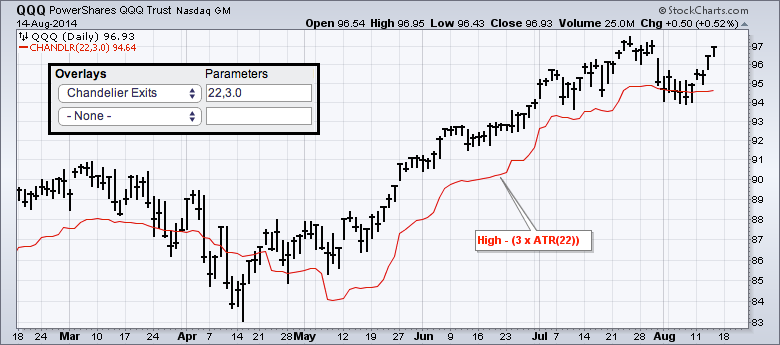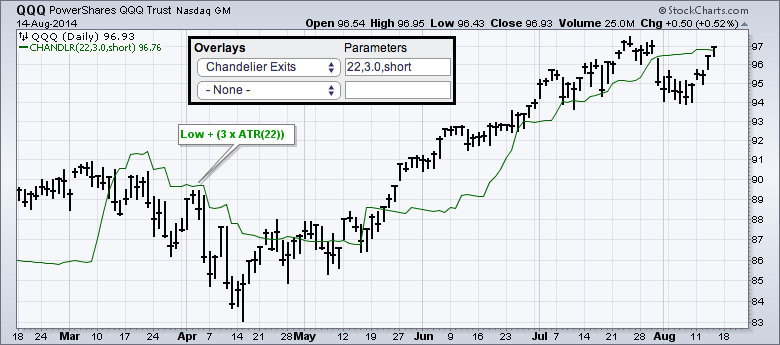|
|
Chartists can add Chandelier Exits as an "overlay" to set a trailing stop-loss for long and short positions. Chandelier Exits are dynamic because they are based on the Average True Range (ATR), which is a measure of volatility. The default Chandelier Exit is designed to set a trailing stop-loss for long positions. A 22-period Chandelier Exit for long positions would set a trailing stop-loss three 22-period ATR values below the 22-period high. The exit will remain below prices during an uptrend and rise as the uptrend continues. A move below the Chandelier line could then act as a stop-loss.
Chartists can add the word "short" to set a trailing stop-loss for short positions. A 22-period Chandelier Exit for shorts would set a trailing stop-loss three 22-period ATR values above the 22-period low. The exit will remain above prices during a downtrend and fall as the downtrend continues. A move above the Chandelier line could then act as a stop-loss. You can read more about Chandelier Exits in our ChartSchool.




